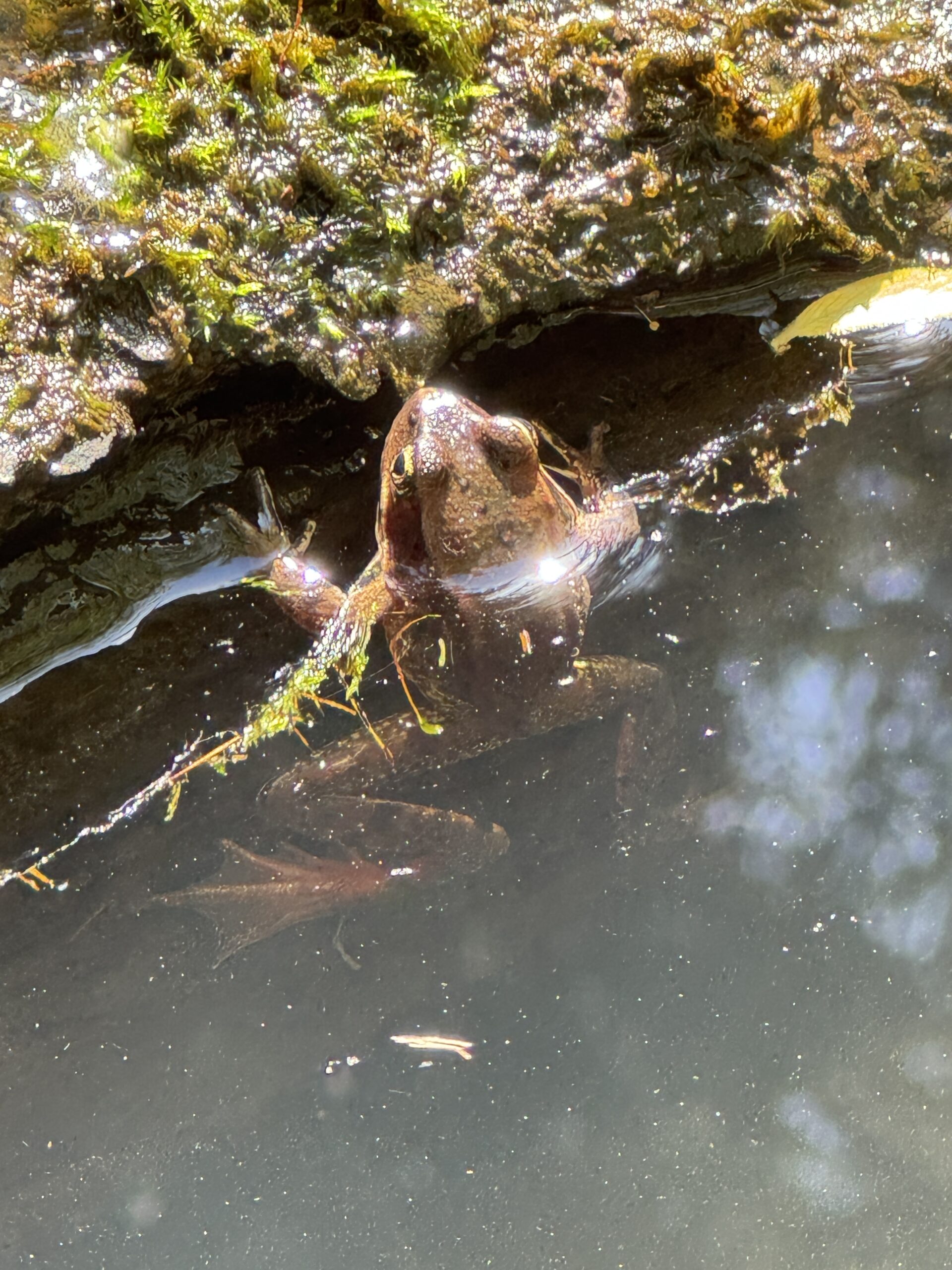Hoppy and Healthy: 2025 Amphibian Monitoring Success
This spring, we surveyed ponds and wetlands on Bainbridge Island for quiet signs of amphibian life, from jelly-like egg masses to tiny tadpoles. Taking part in the first-ever amphibian surveys on the Island, six dedicated volunteers and Land Trust staff logged more than 43 hours wading and peering into the water in search of frogs and salamanders.
At Cougar Creek Preserve, we found a vibrant amphibian community, with five different species. March and April proved to be peak egg-laying season, with more than 20 egg masses logged each month, altogether holding roughly 1,500 tiny eggs. By April, we saw the life cycle continue as many of those eggs had transformed into wriggling tadpoles. At the Wildlife Corridor, sightings were limited by terrain and murkier waters, but we still noted four resilient species. The most common species sighted across both sites was the Northern red-legged frog (pictured above).
Best of all, we found no signs of disease, deformities, or invasive bullfrogs, which is a hopeful sign that our amphibians are holding their own! By monitoring year after year, we will be able to better track the stability and health of our wetland residents.
The Land Trust has been working for decades to conserve and restore habitats like these—and the impact of this work is clear! Amphibians are sensitive to change in water quality, habitat loss, and climate change, so monitoring their presence helps us track ecosystem health over time and informs future conservation strategies. By sustaining healthy wetlands and waterways for amphibians, we can ensure a vibrant future for the entire ecosystem.
Thanks to our volunteers, and partners at Bloedel Reserve, IslandWood, and Woodland Park Zoo for the success of this community science project.

